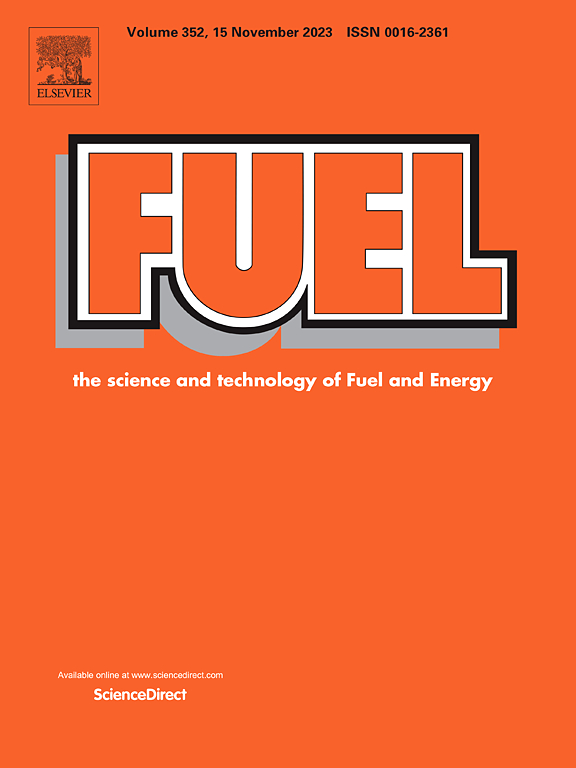Mathematical modeling of multi-step kinetics of biomass pyrolysis applied to agave bagasse and char oxidation reactivity
IF 6.7
1区 工程技术
Q2 ENERGY & FUELS
引用次数: 0
Abstract
Computational Fluid Dynamics (CFD) modeling was used to investigate the pyrolysis multi-step kinetics of lignocellulosic biomass, focusing on agave bagasse (AB), including drying, devolatilization, and secondary reactions such as tar cracking and the subsequent char gasification reactivity (both heterogeneous and homogeneous reaction).
The pyrolysis was carried out between 100 and 1000 °C. During this process, the release of non-condensable gases such as H2, CH4, CO, and CO2, as well as the evolution of char and its composition in terms of carbon, hydrogen, oxygen, and ash content, were simulated and validated using a thermogravimetric analyzer (TGA). The simulation results showed that the char produced at temperatures above 700 °C primarily consisted of carbon and ash, with values above 72.85 wt% and 12.39 wt%, confirmed by experimental data. Subsequently, the pyrolysis process was followed by both isothermal and non-isothermal partial oxidation reactions with air. In the non-isothermal oxidation was conducted between 700 and 1000 °C, the influence of heating rate on both gaseous and char products was examined, while in the isothermal oxidation was carried out at 850, 900, 950, and 1000 °C, the reactivity index and the peak temperature were examined to express the oxidation reactivity. The CFD results show that the reactivity rate of chars increases proportionally from 0.0080 min−1 at 850 °C to 0.0129 min−1 at 1000 °C. The models used for homogeneous and heterogeneous reactions accurately predicted the experimental results of the evolution of the gas and char products during the oxidation under isothermal and non-isothermal conditions studied.
求助全文
约1分钟内获得全文
求助全文
来源期刊

Fuel
工程技术-工程:化工
CiteScore
12.80
自引率
20.30%
发文量
3506
审稿时长
64 days
期刊介绍:
The exploration of energy sources remains a critical matter of study. For the past nine decades, fuel has consistently held the forefront in primary research efforts within the field of energy science. This area of investigation encompasses a wide range of subjects, with a particular emphasis on emerging concerns like environmental factors and pollution.
 求助内容:
求助内容: 应助结果提醒方式:
应助结果提醒方式:


